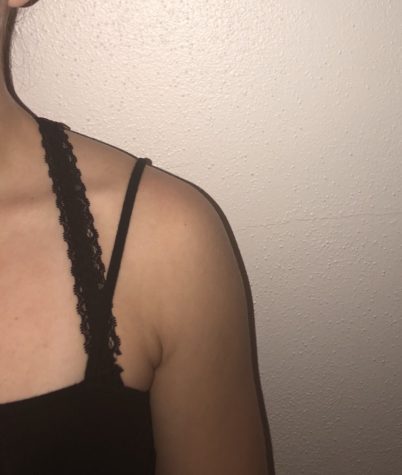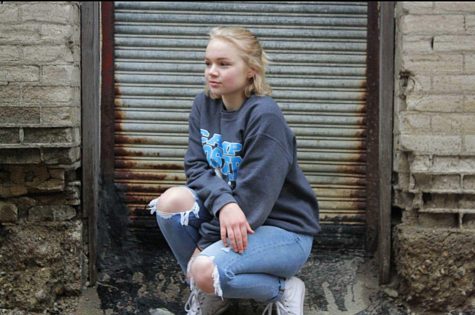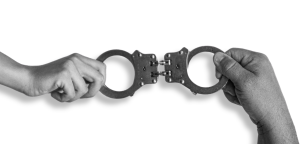The problem with dress code
In the student planners the dress code requires shorts to be mid thigh length, but shorts like these are worn all the time.
September 26, 2018
Schools are scared of shoulders. At LHS and other schools all around the country, active dress codes hide “provocative” parts of the female body like shoulders and belly buttons.
According to the LHS dress code found in student planners, there are 10 clothing items listed that will prompt teachers to ask a student to change.
“Examples include (but are not limited to) spaghetti strap tops, tube tops, halter tops, midriff tops, backless tops and ‘muscle’ tops. The hemlines of skirts and shorts should reach mid thigh length, no sagging pants below the hips.”
While some of these items are understandable, many of them seem a bit over the top, like spaghetti straps and midriff tops.
An LHS student who wishes to remain anonymous, felt embarrassed and self-conscious after a teacher told her to cover up.
“I was asked to change/cover up while wearing a low cut pink shirt,” the student said. “I was running through the hallway while the music was playing, trying to get to class on time when I was stopped by a teacher who crudely gestured to me and my outfit. She mimicked my cleavage and then dramatically pulled her shirt up. She told me to cover up and I was late to class. I was embarrassed enough to the point where I asked to borrow a sweatshirt from a friend.”
This student was asked by a female teacher to change, but when a male teacher makes this request to a female student, it can be even more uncomfortable.
Sophomore Isabella Gustaf was asked by a male teacher in 8th grade to change her clothes.
“I was wearing shorts and a tank top, the tank top was a finger width or so thicker than spaghetti straps,” said Gustaf. “He said that my breasts and butt were distracting some of the guys in the class. I was really nervous about guys always staring at my butt for the rest of the year.”
School is supposed to be a place of learning no student, male or female, should ever have to worry about feeling objectified or sexualized.
Dress code can be a tough issue. There are people who say there shouldn’t be one at all or everyone should have uniforms. There needs to be a nice balance between the two. If someone is wearing something with inappropriate imagery or offensive language, an extremely short midriff top, is showing a lot of cleavage or has on overly revealing shorts, they should have to change for the fact that apparel like that are not school appropriate. There needs to be a specific and realistic outline for the rules of the dresscode, and students need to be involved in the writing and implementing of these rules.











Sophia Boyd • Oct 10, 2018 at 9:52 am
I really appreciated the stand against the dress-code in this article. There have been times where my friends or I have been dress-coded for something that is not mentioned in our planners (example being my “shirt was too revealing” because it was tighter around my chest than my stomach). This attribute to fair dressing shows that the rules aren’t stated clearly or fairly, and there needs to be a change. Thank you for putting this out there!!
Hazel LuceroVasquez • Oct 8, 2018 at 10:13 am
I like this article a lot I mean it really speaks the truth about dress code and how it should definitely be changed. I remember last year I was wearing a spaghetti strap tank top and a I had a flannel shirt over it and a teacher called me out in front of the whole class, the rest of the day I hated myself all I wanted to do was go home and just cover myself up. It was super embarrassing what the teacher did I had lost all of my respect for that teacher.